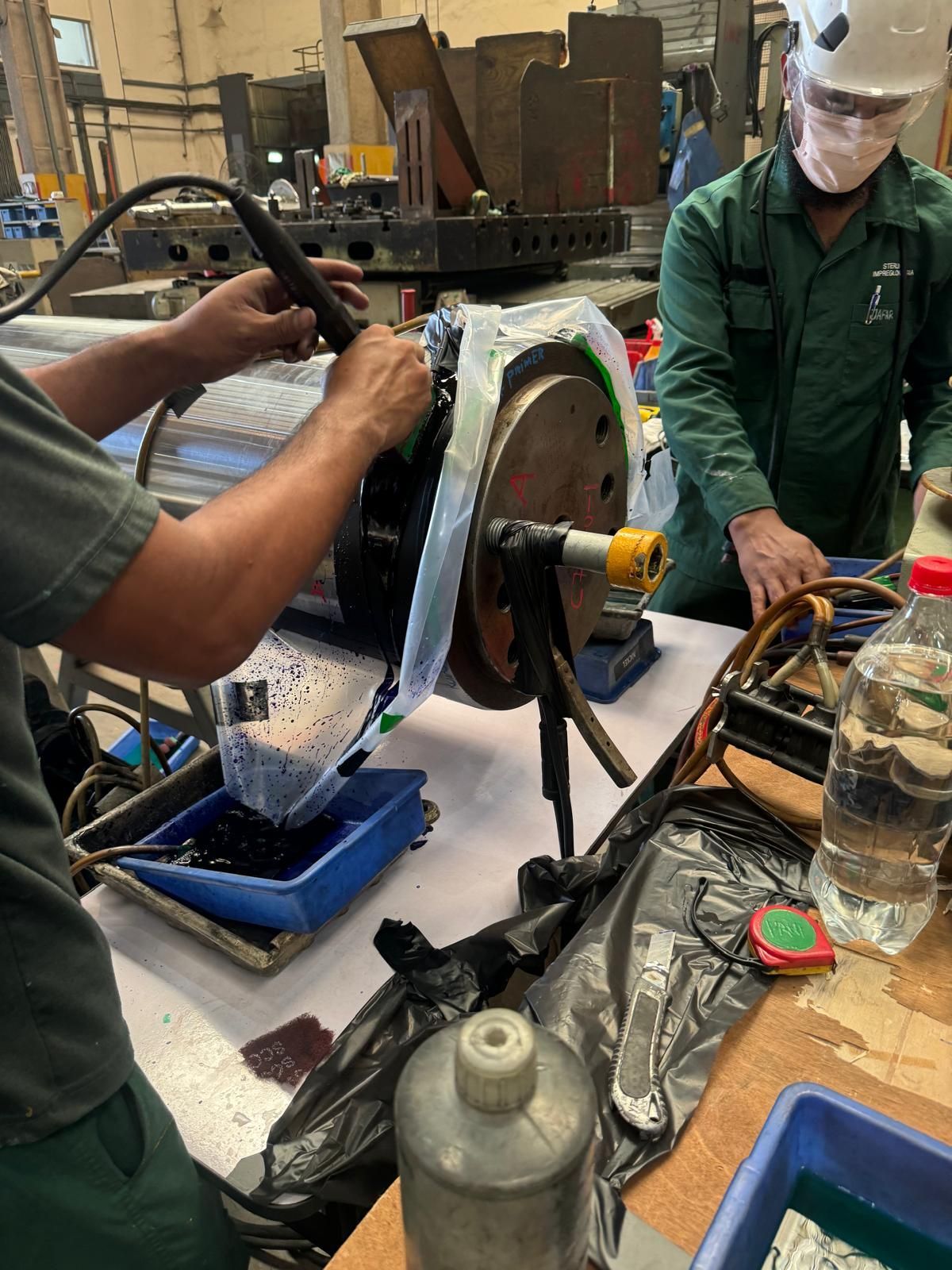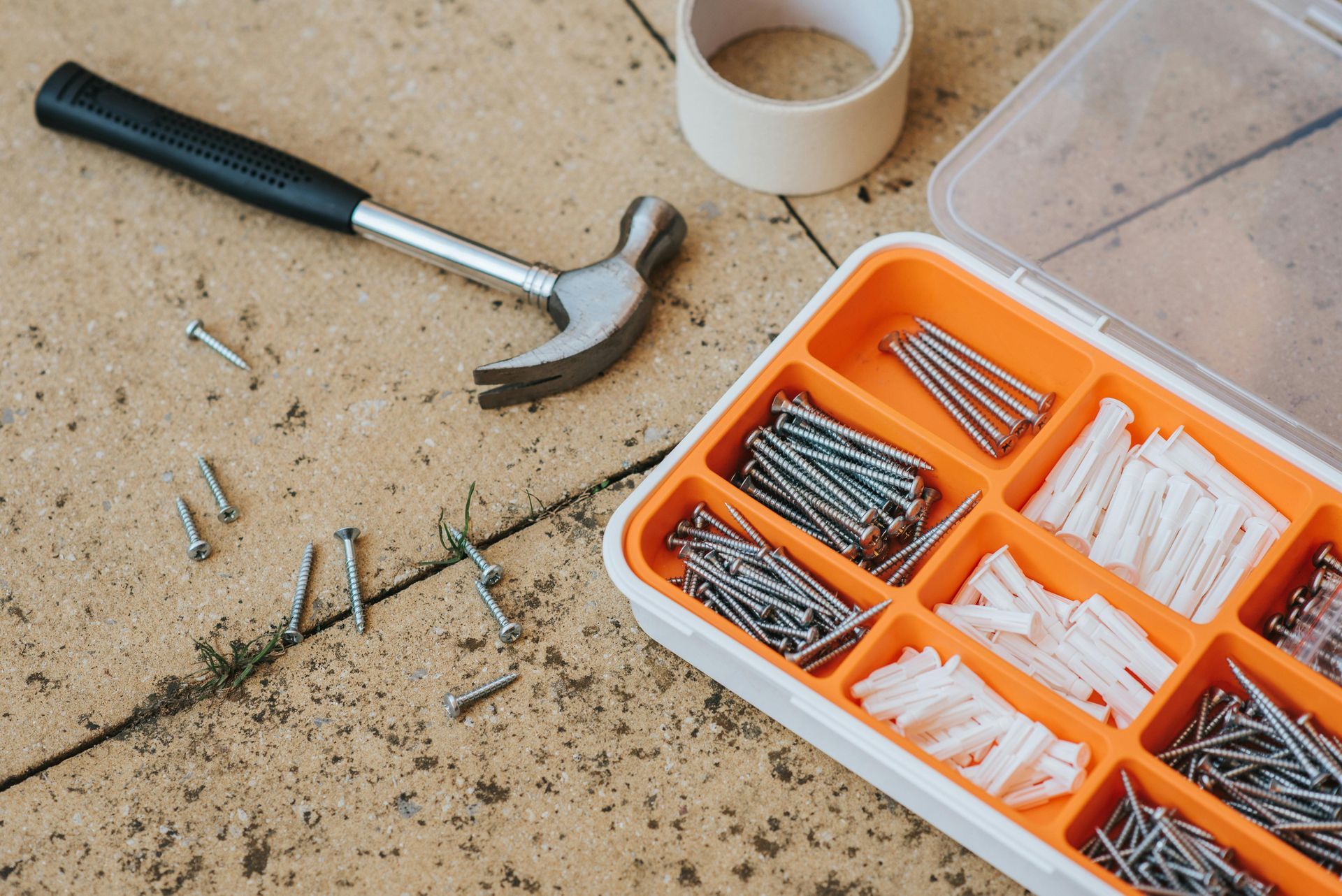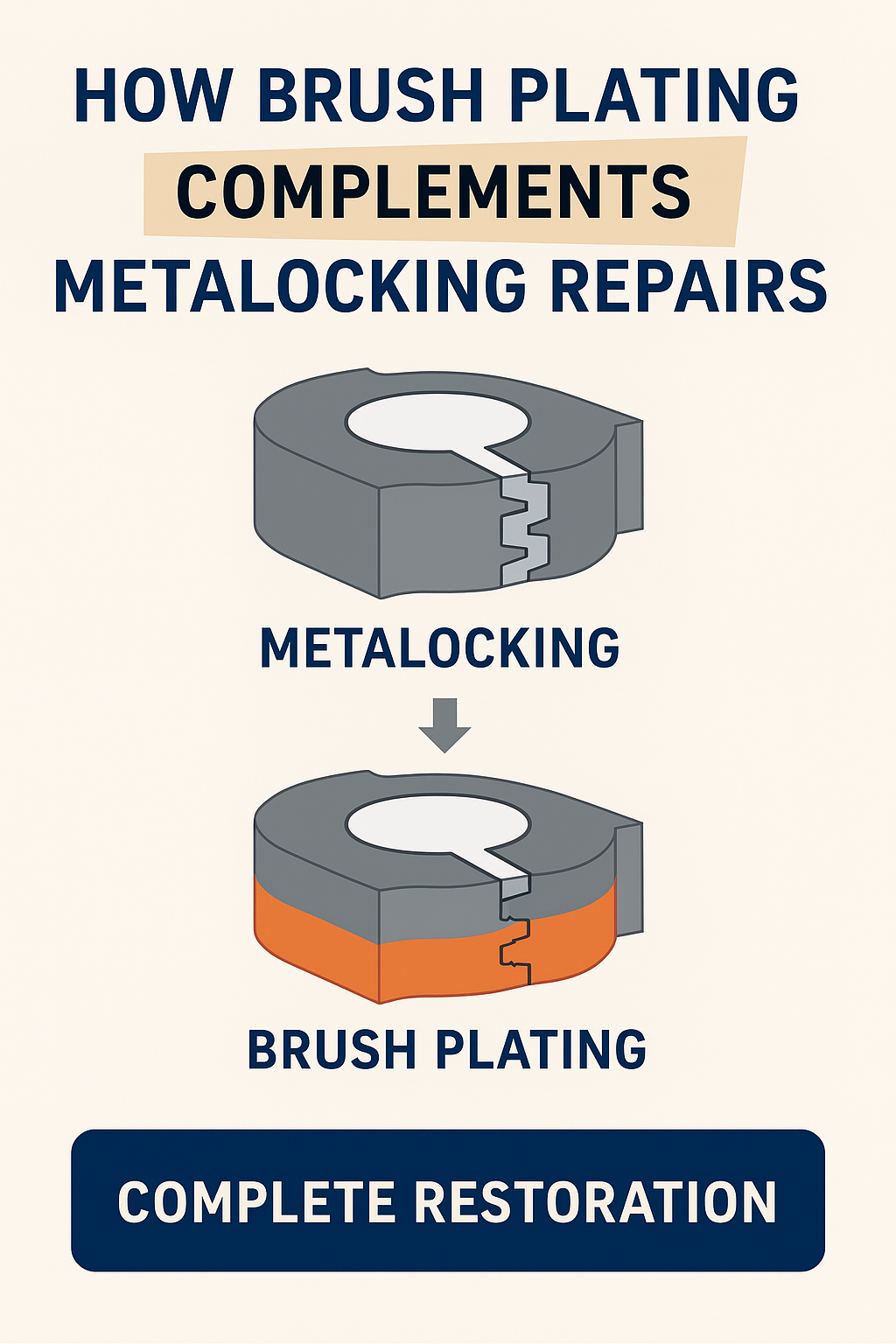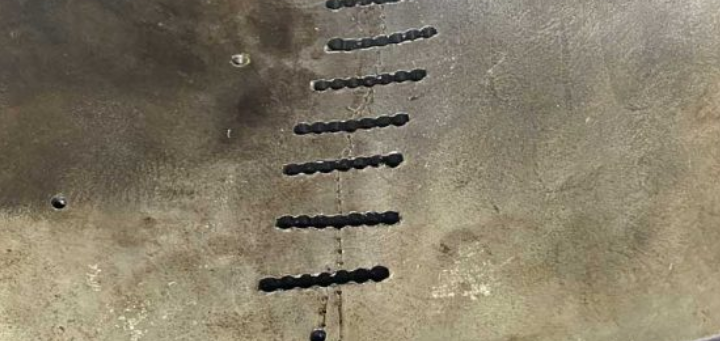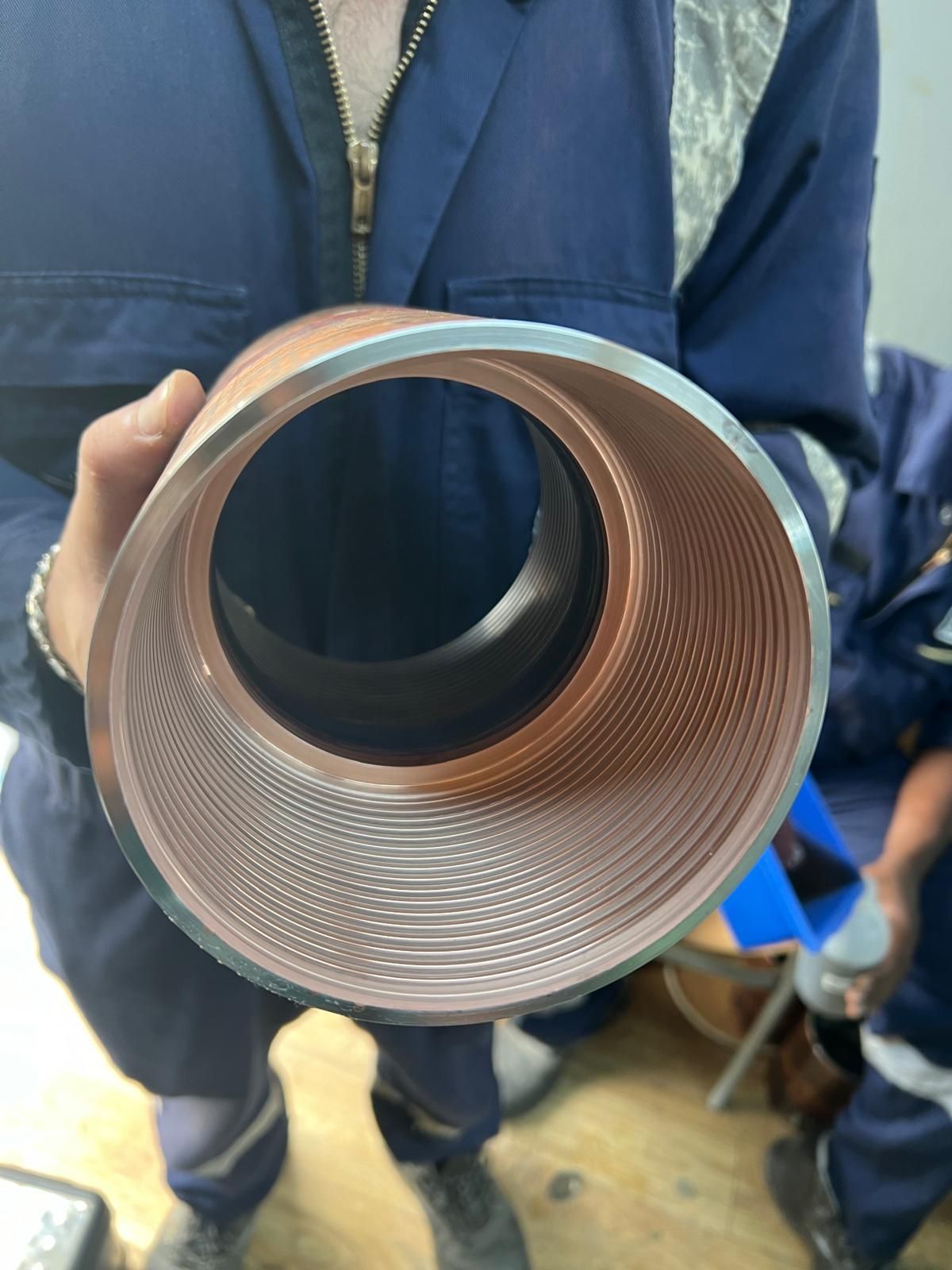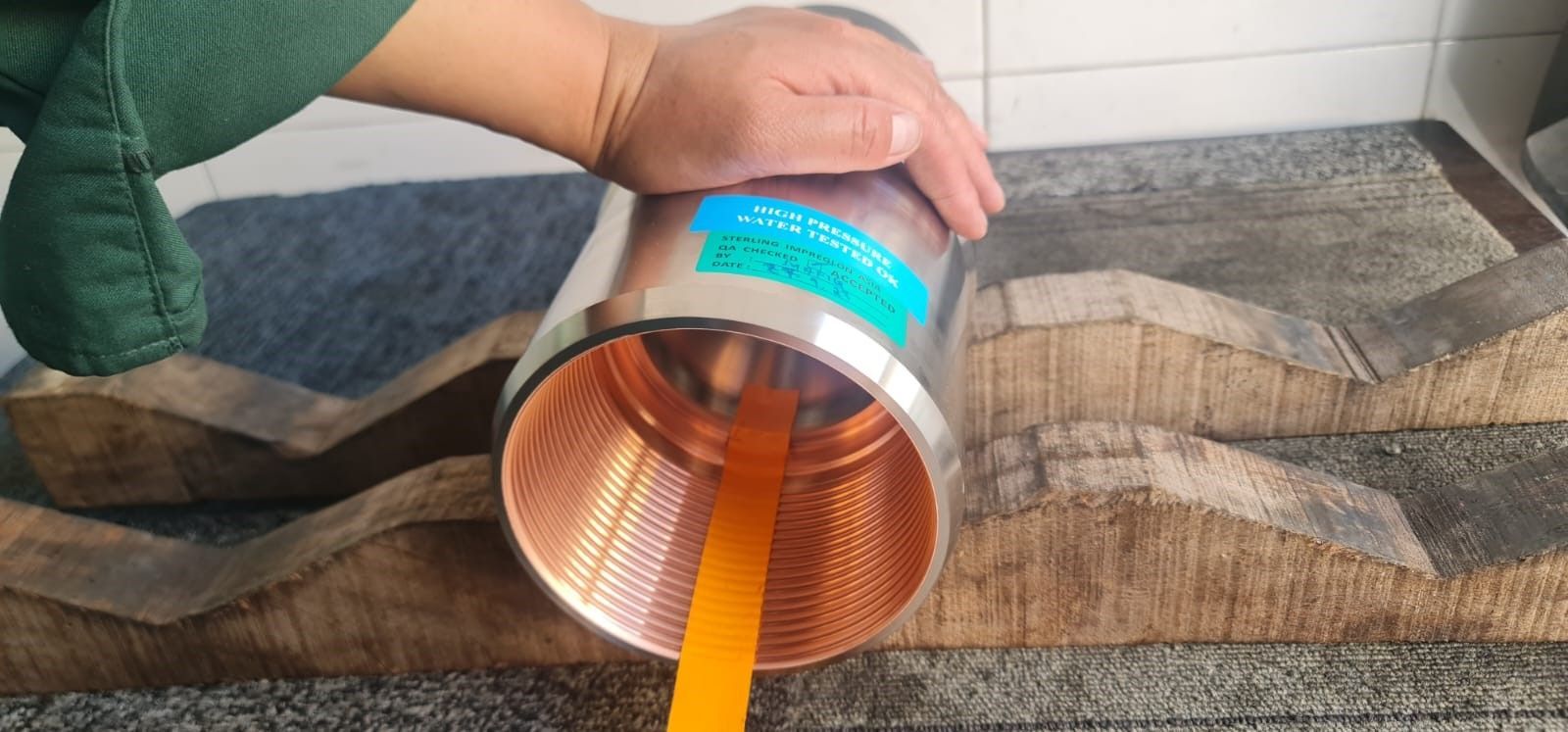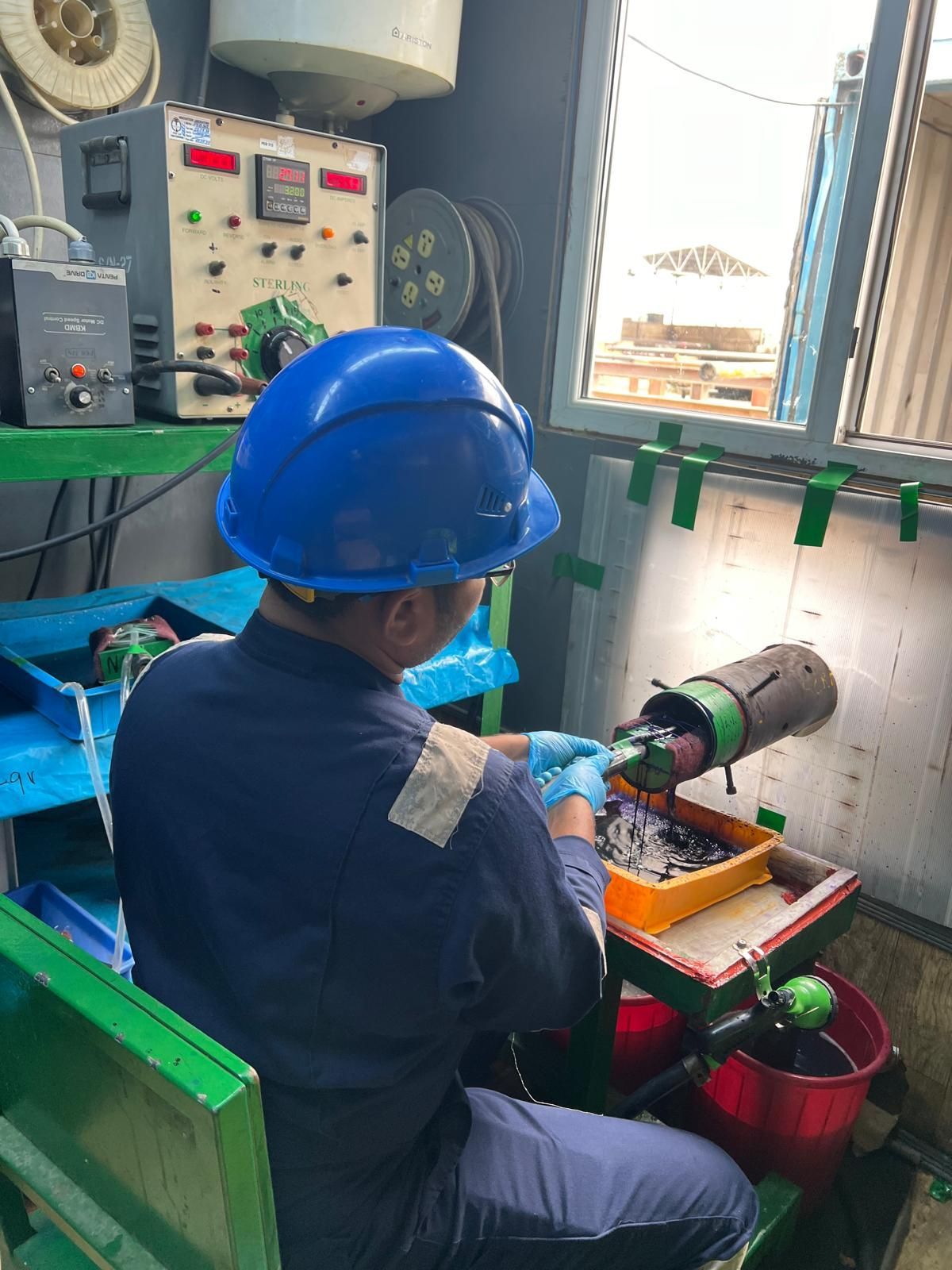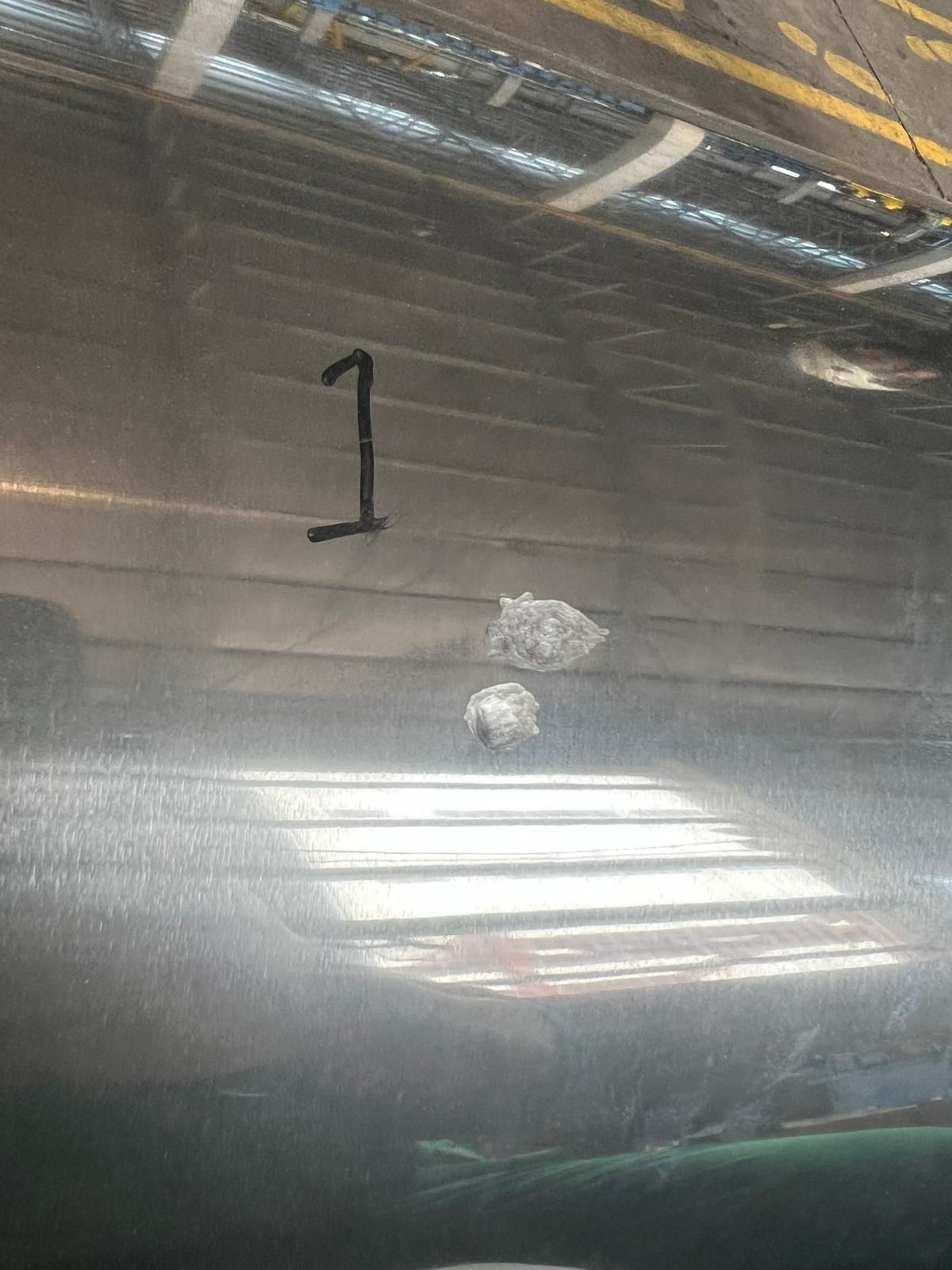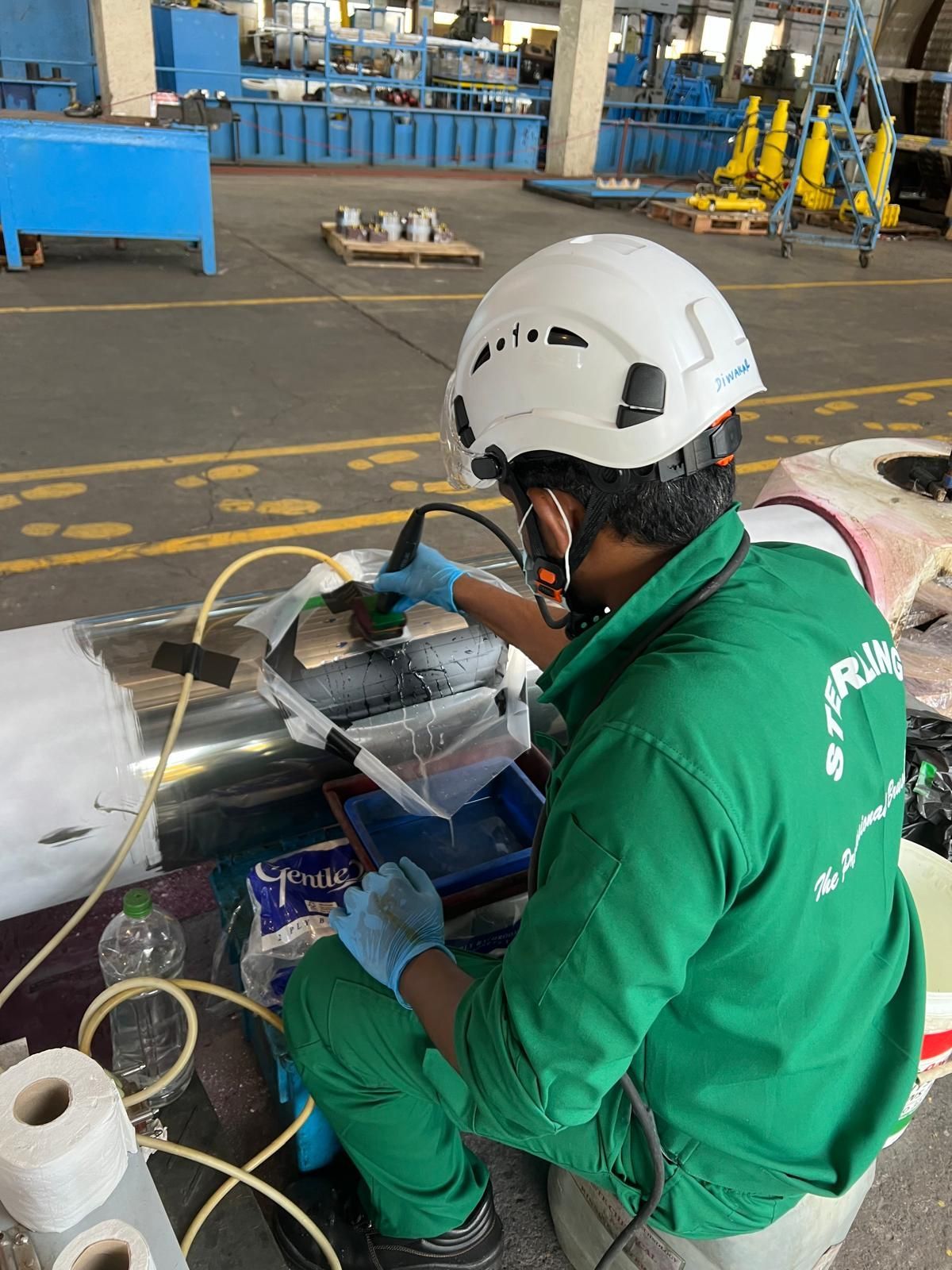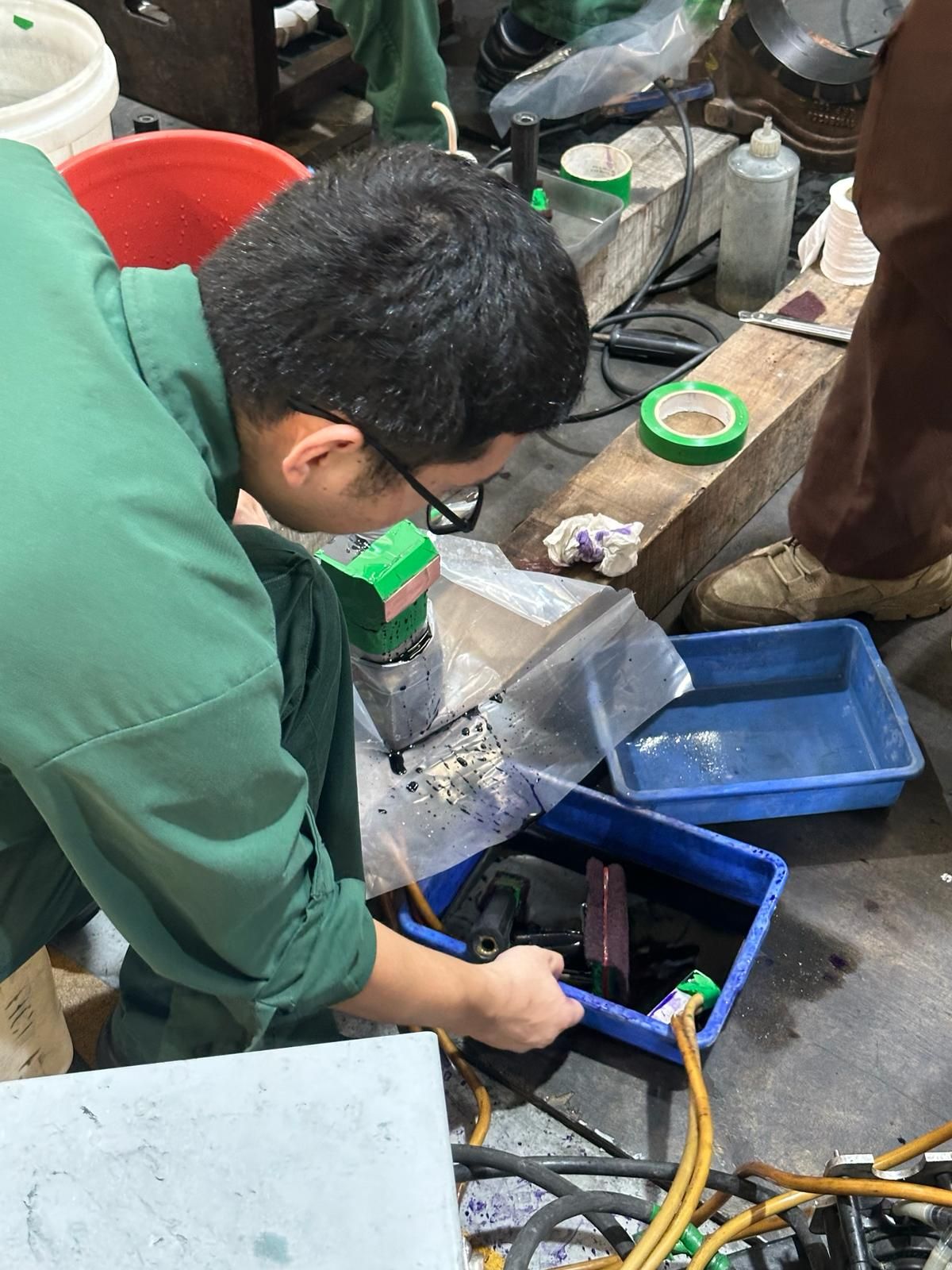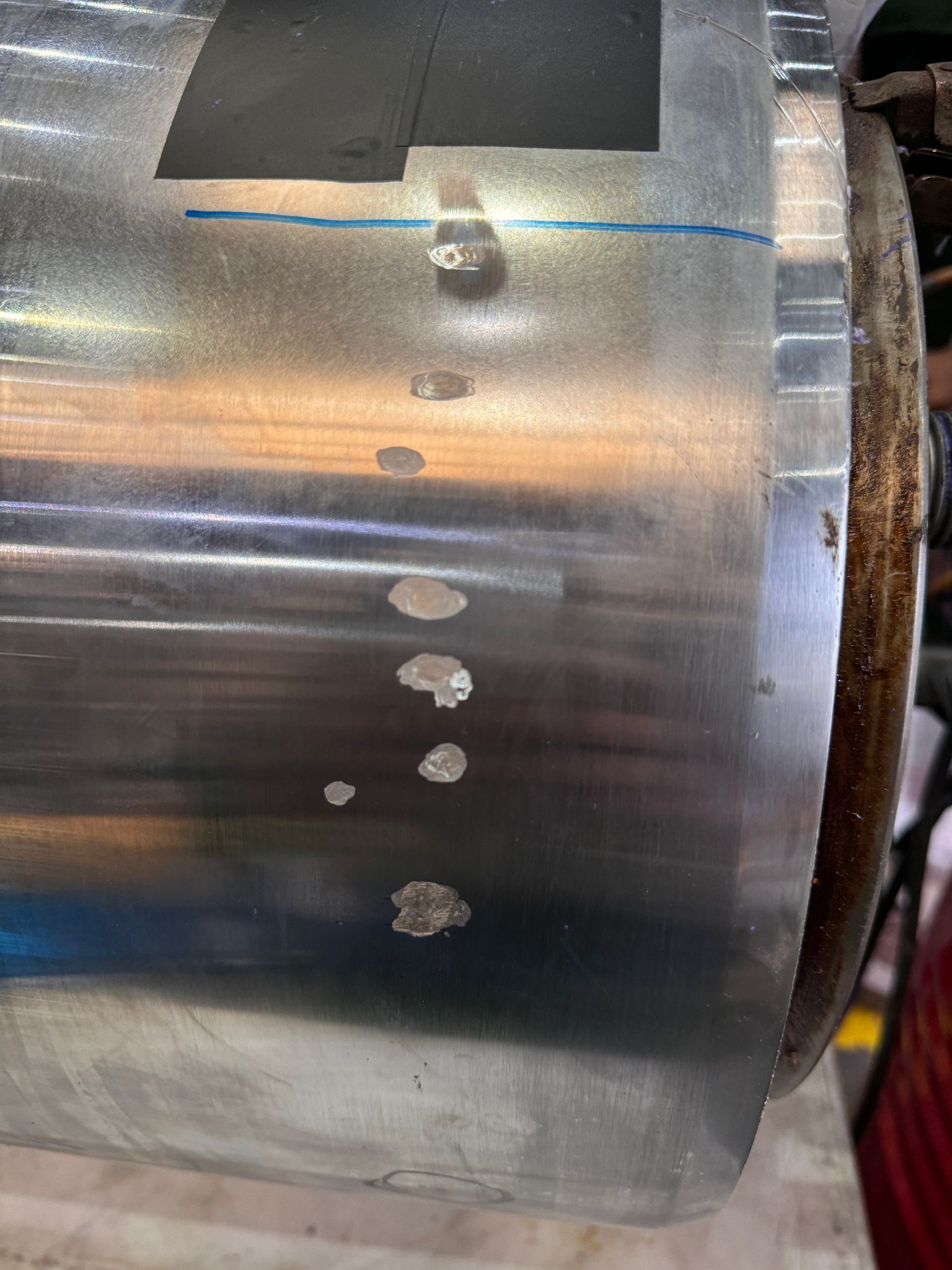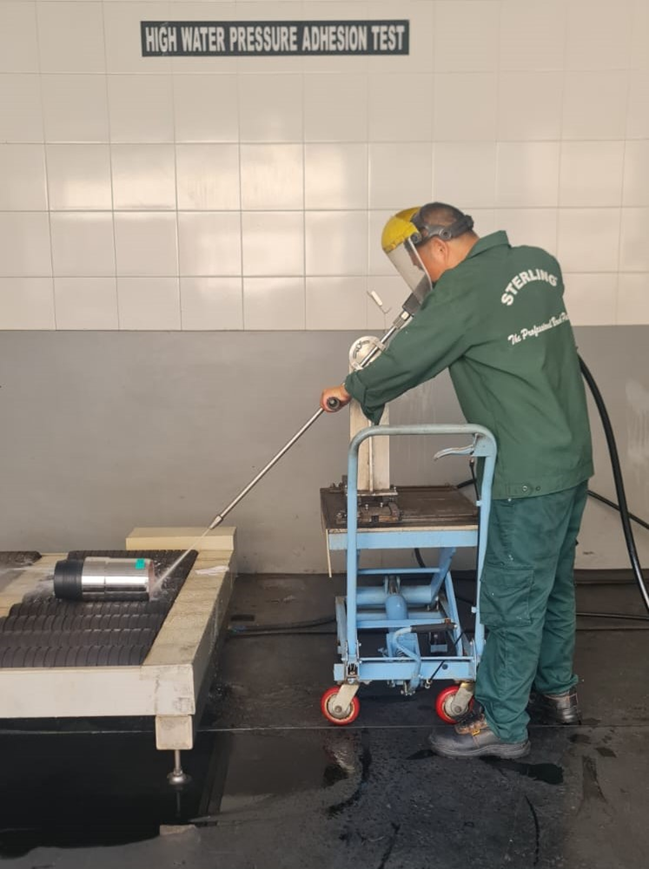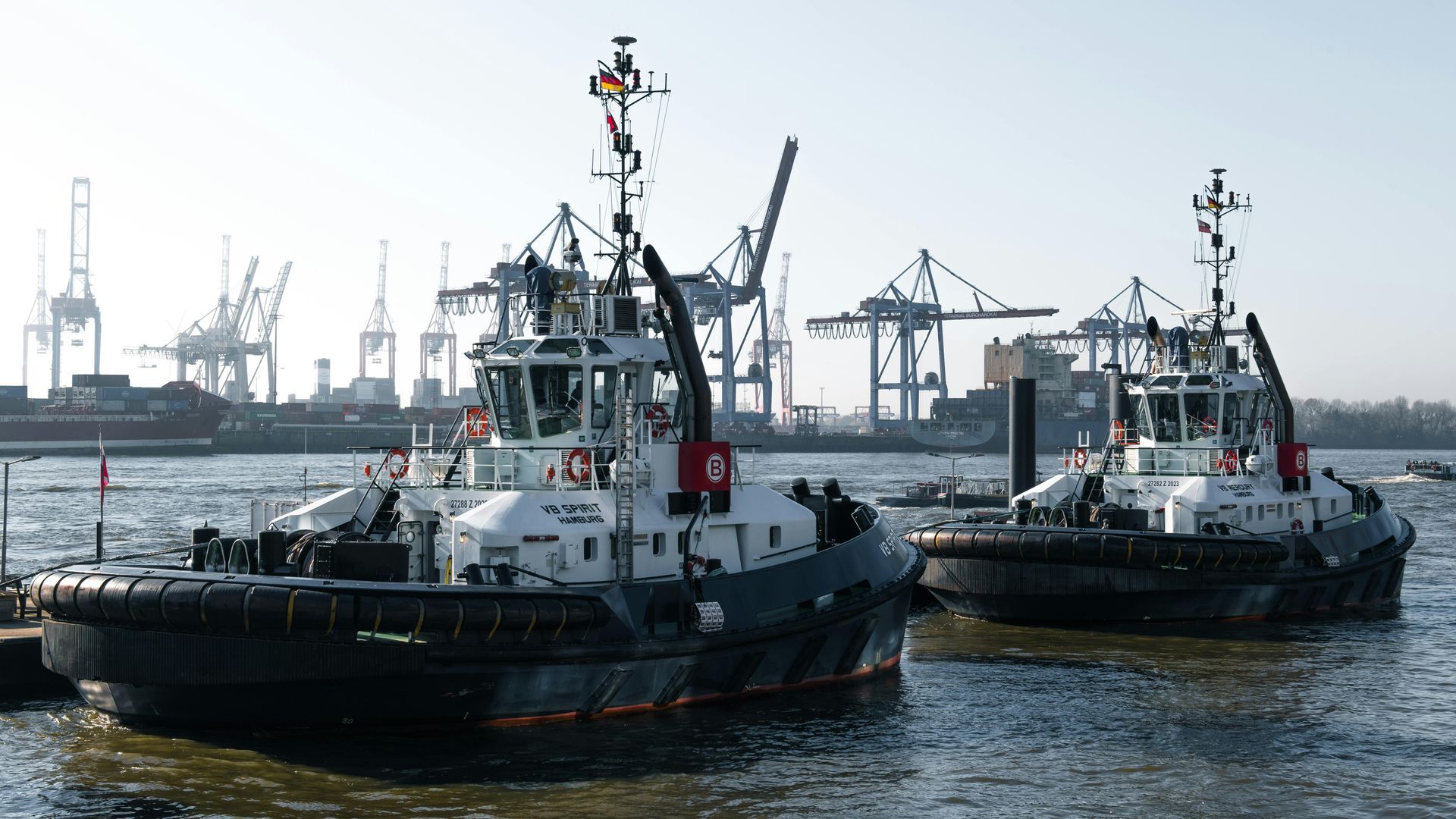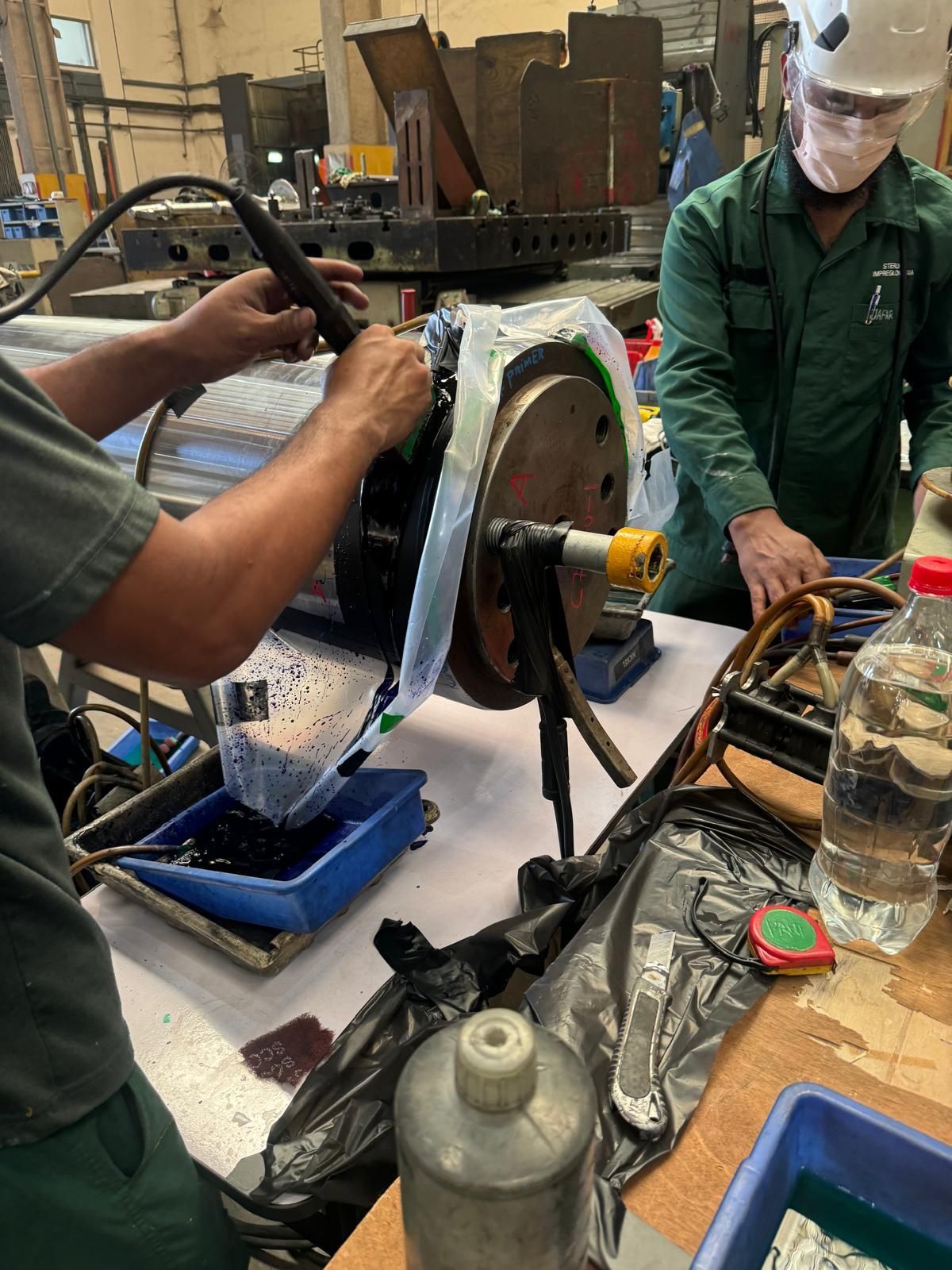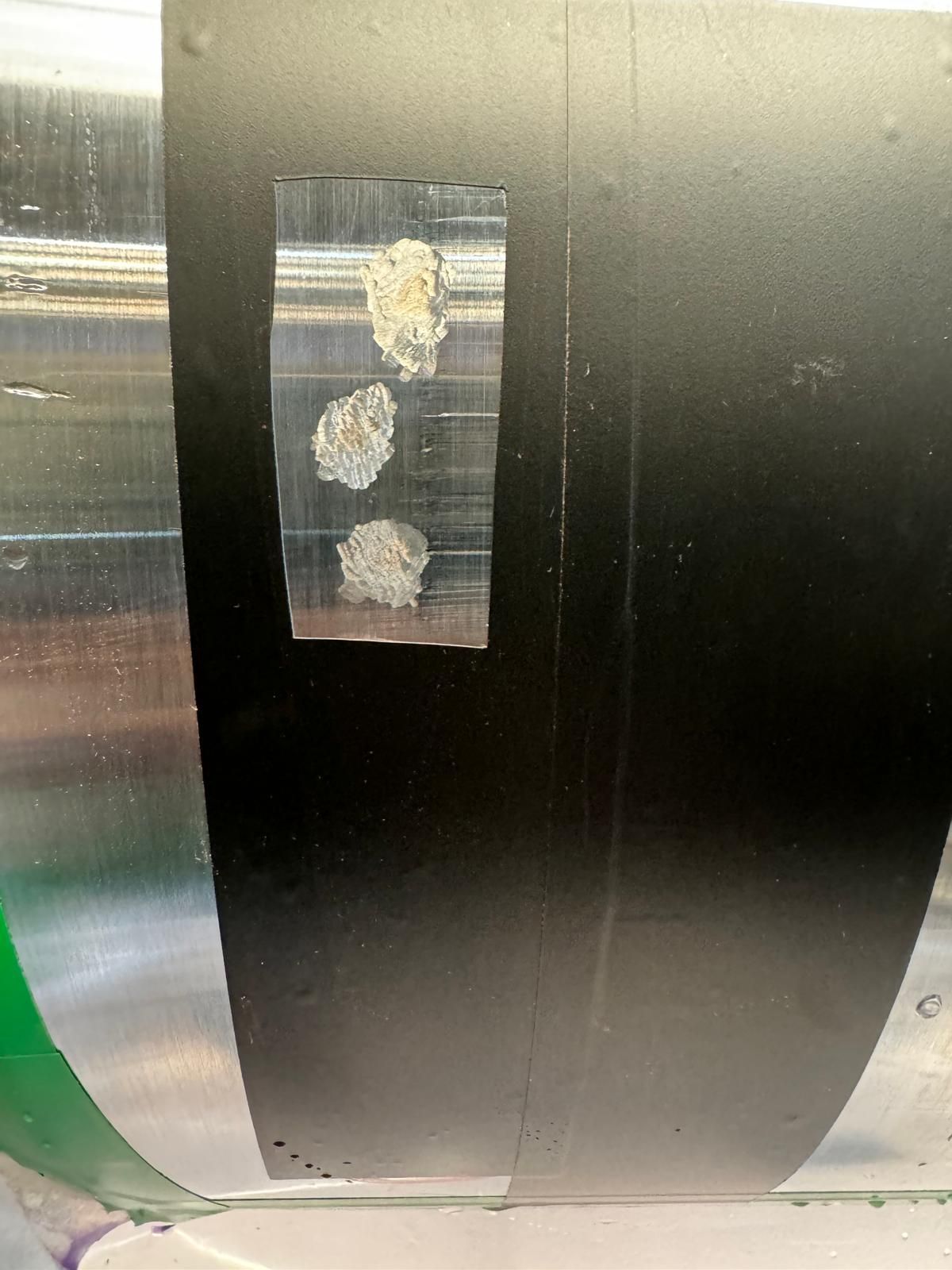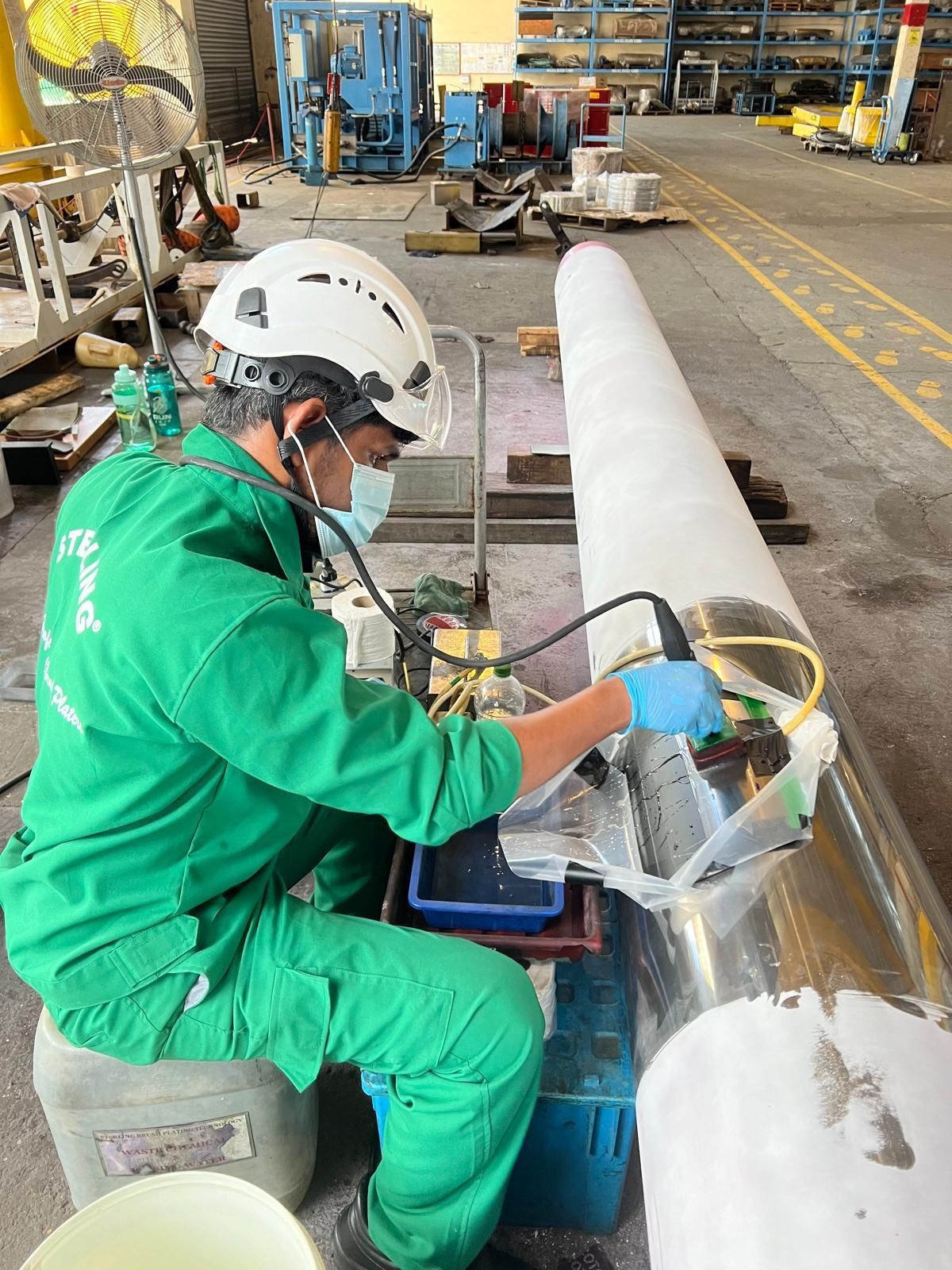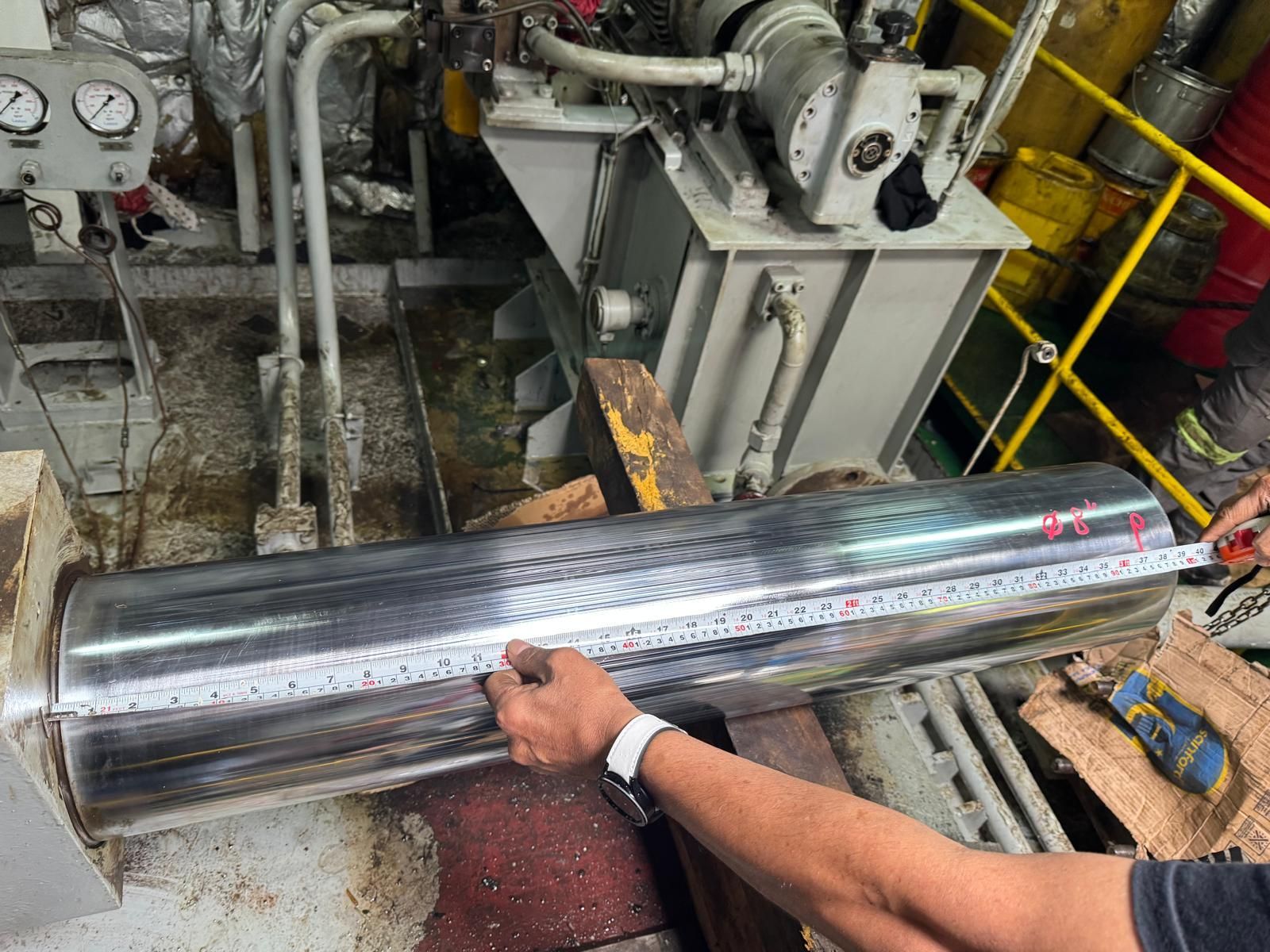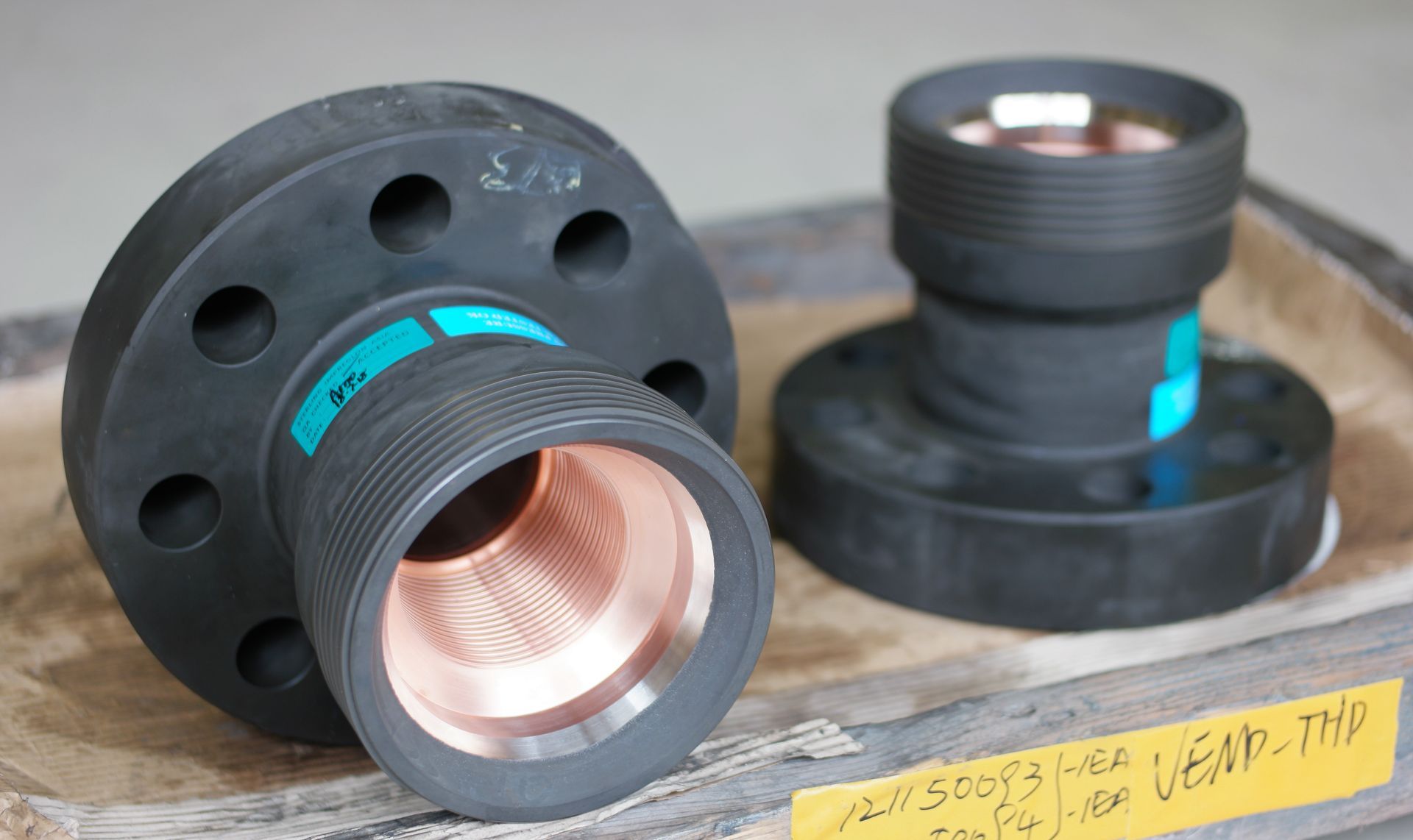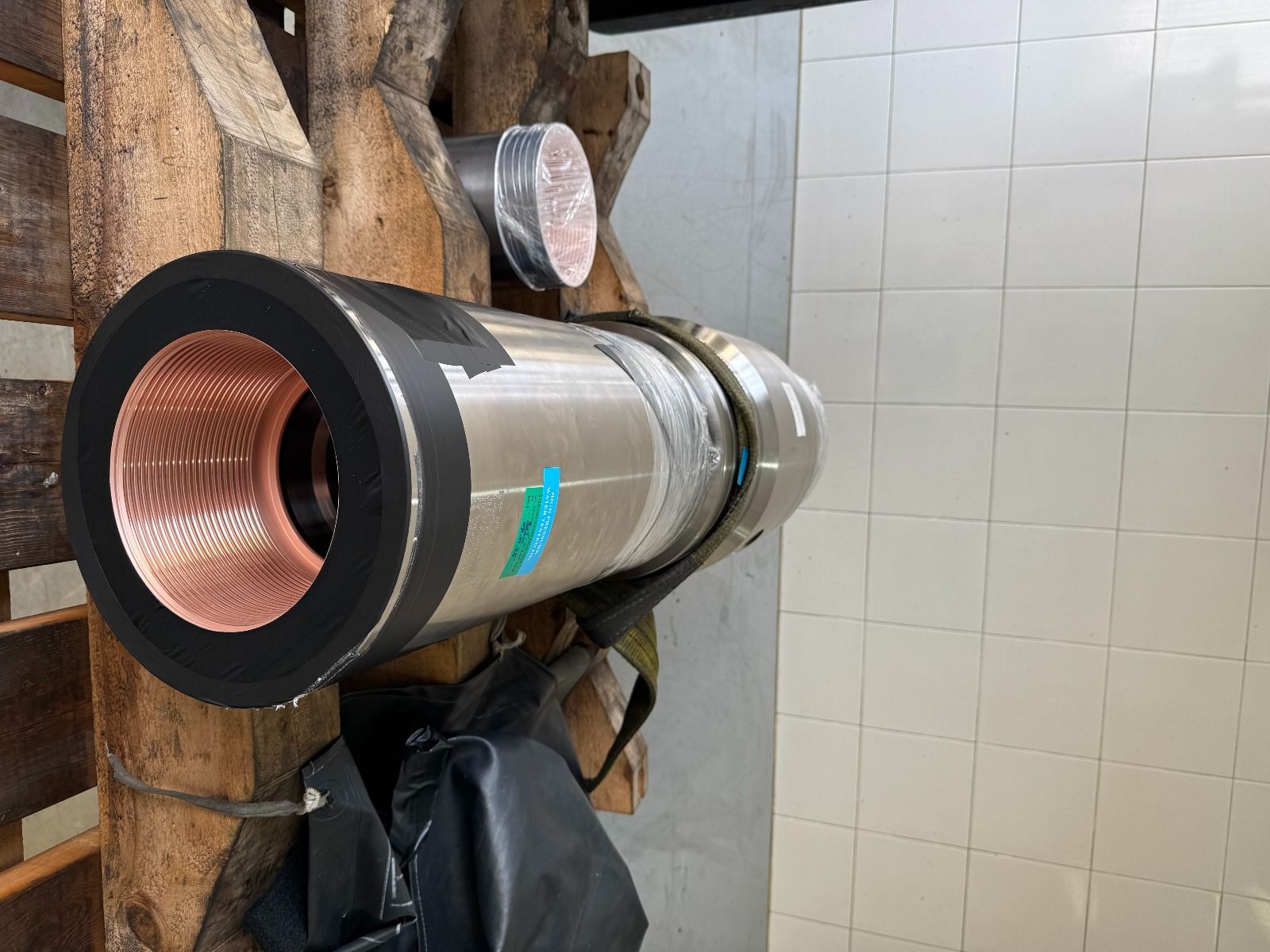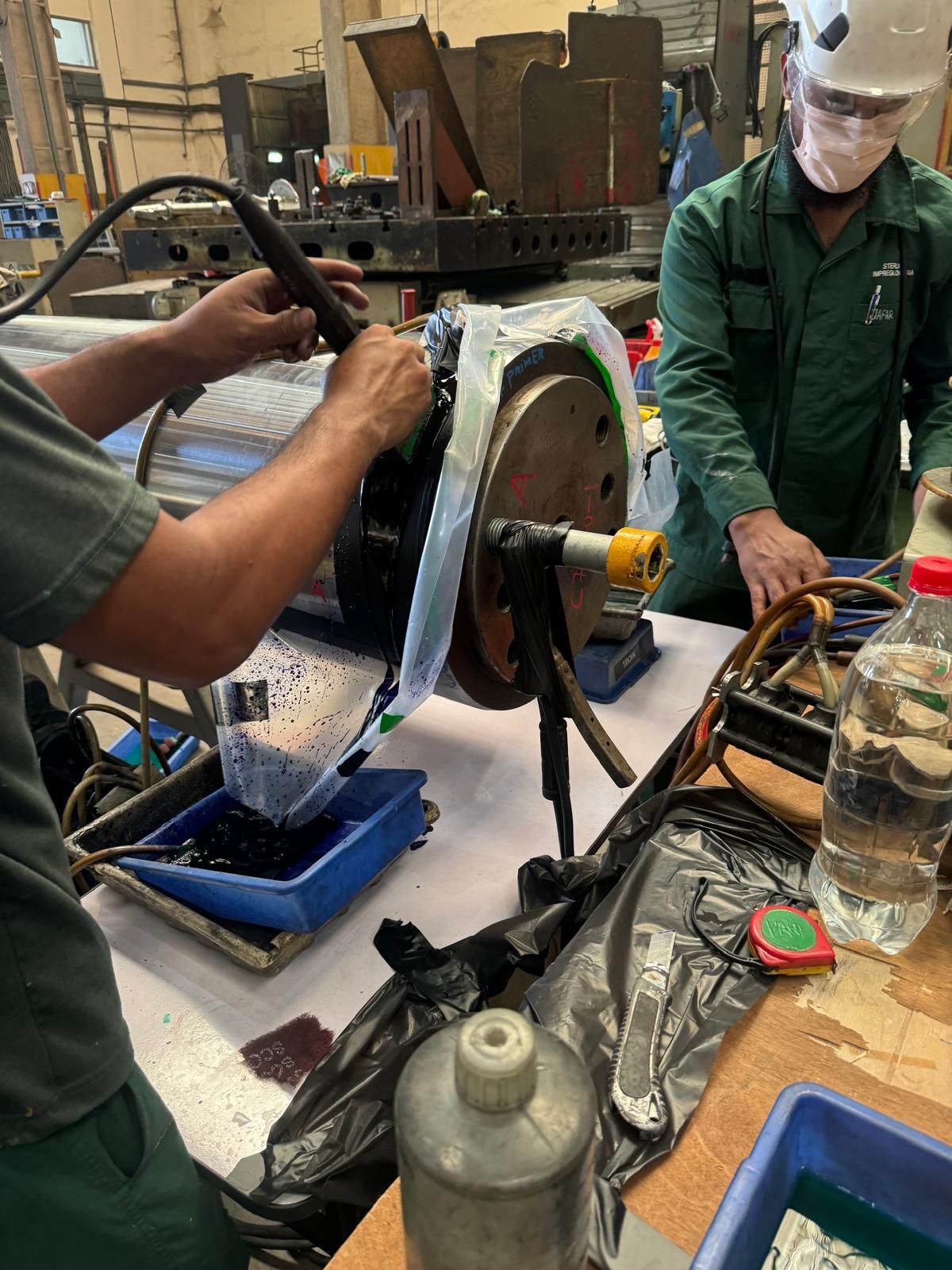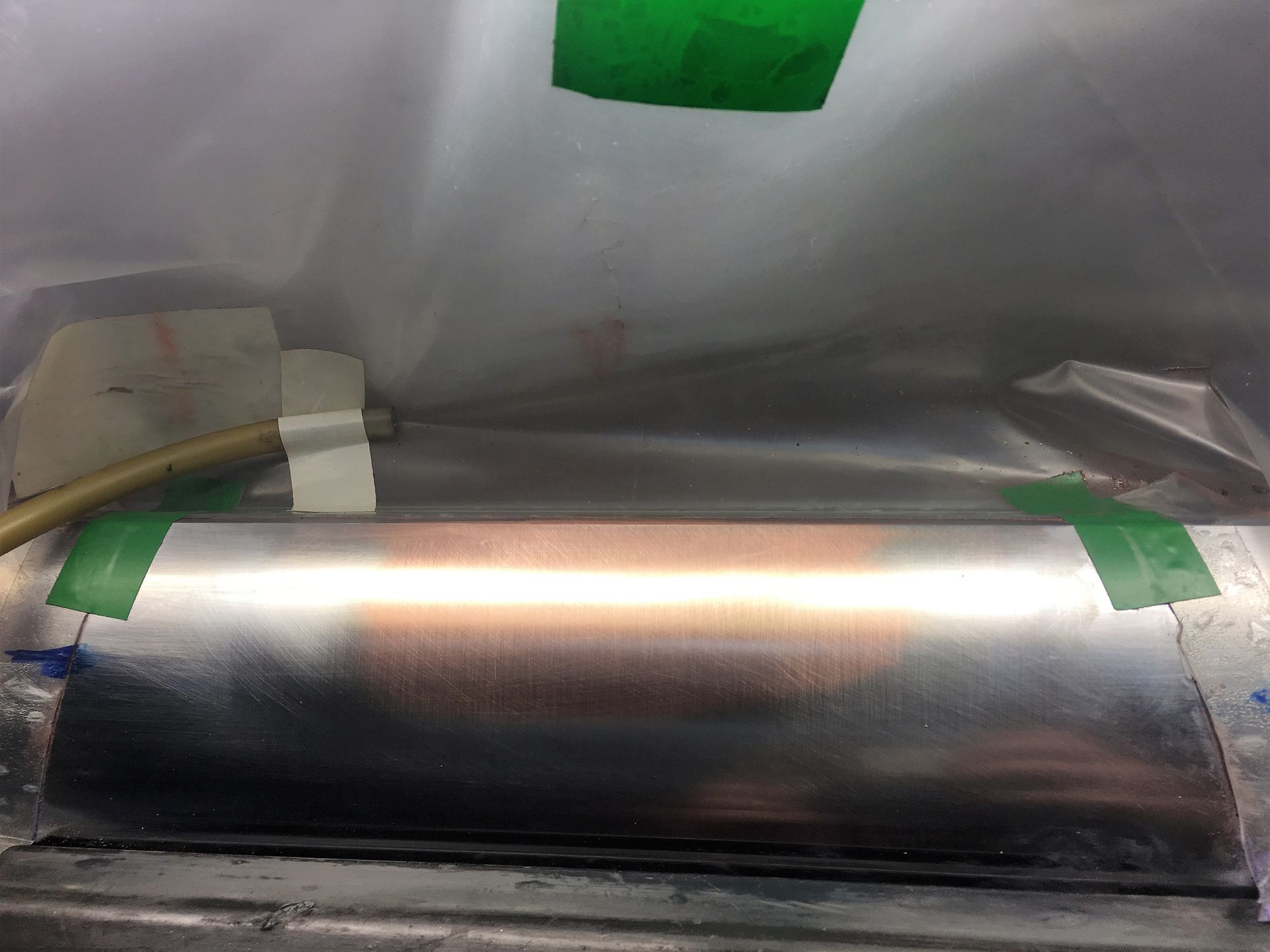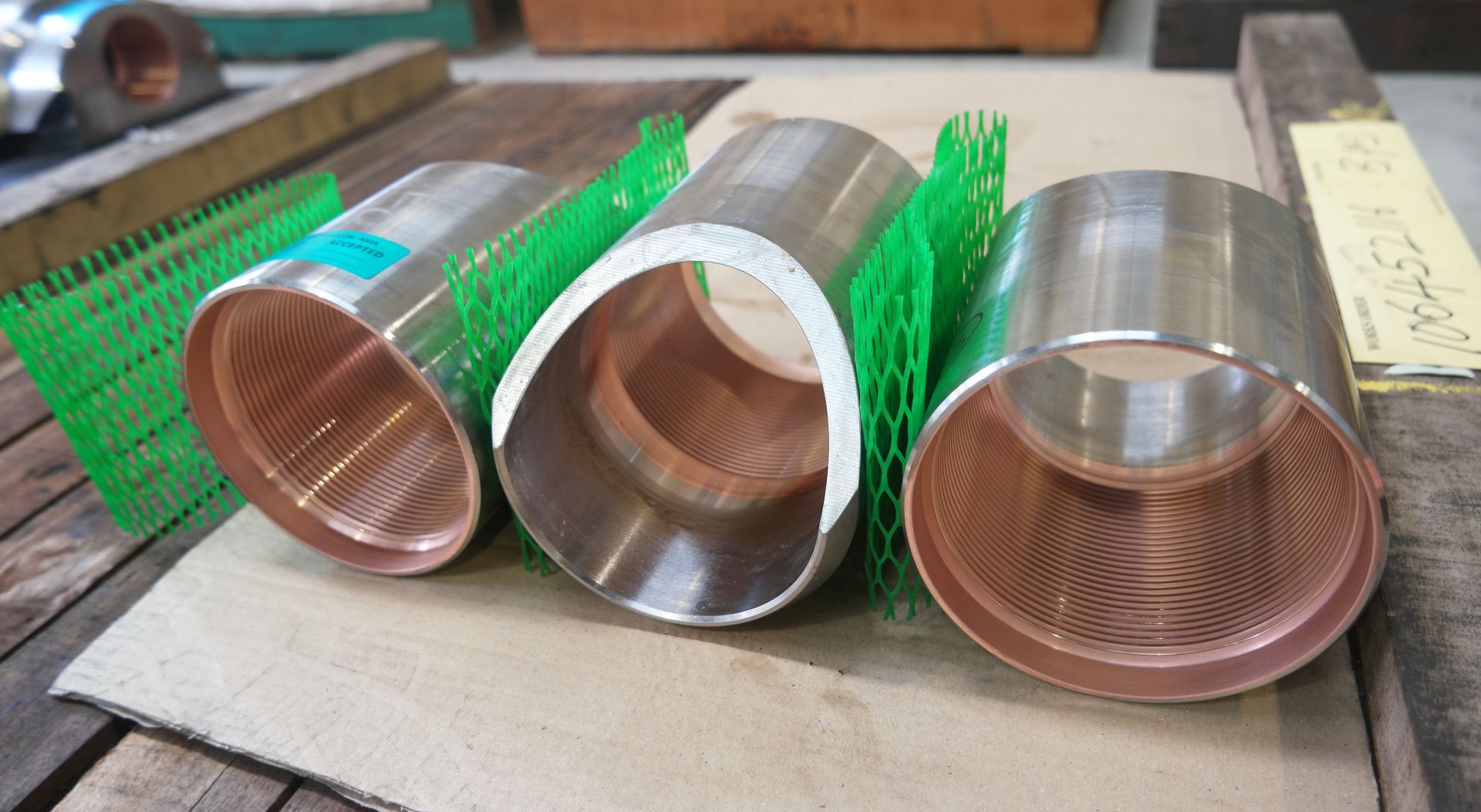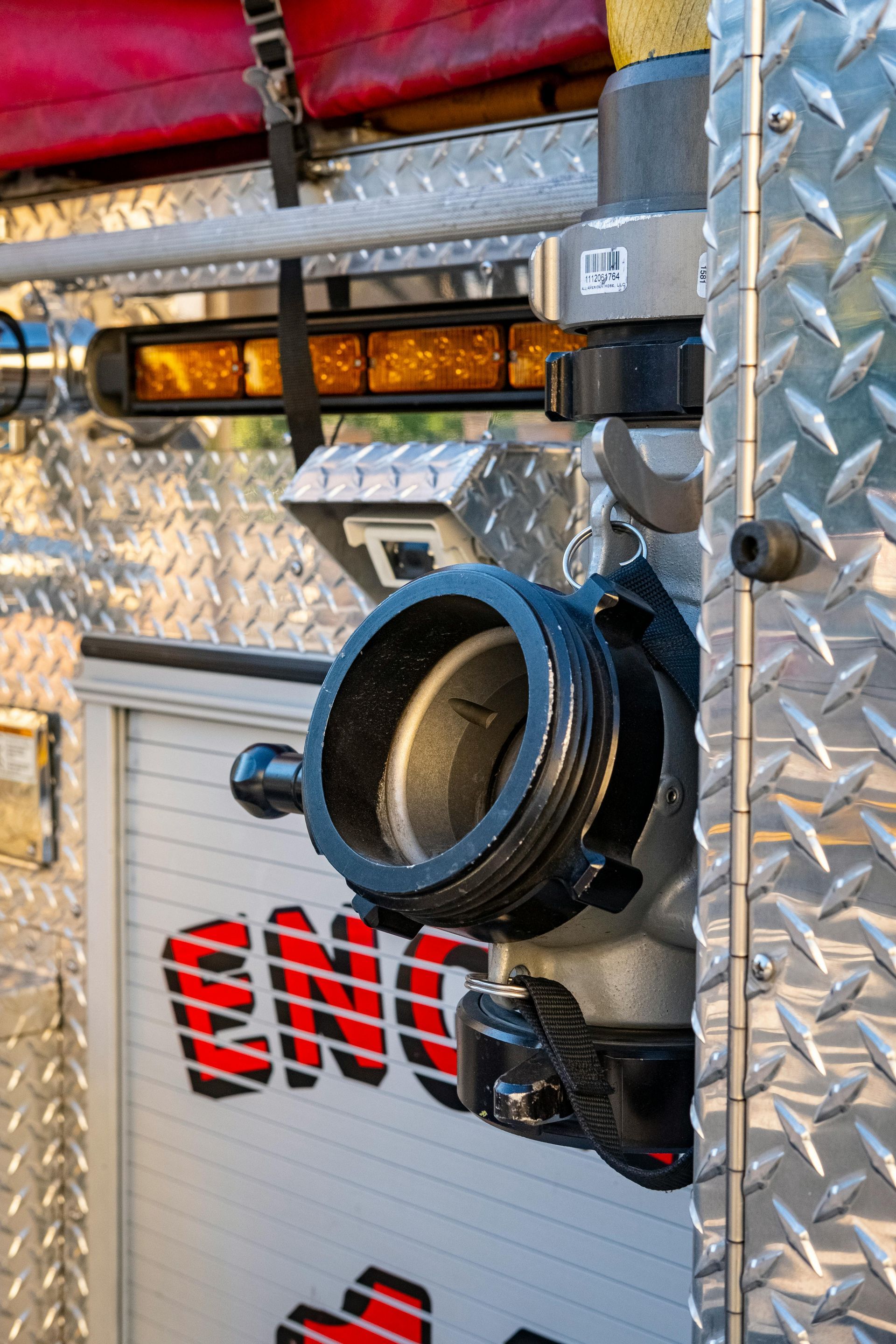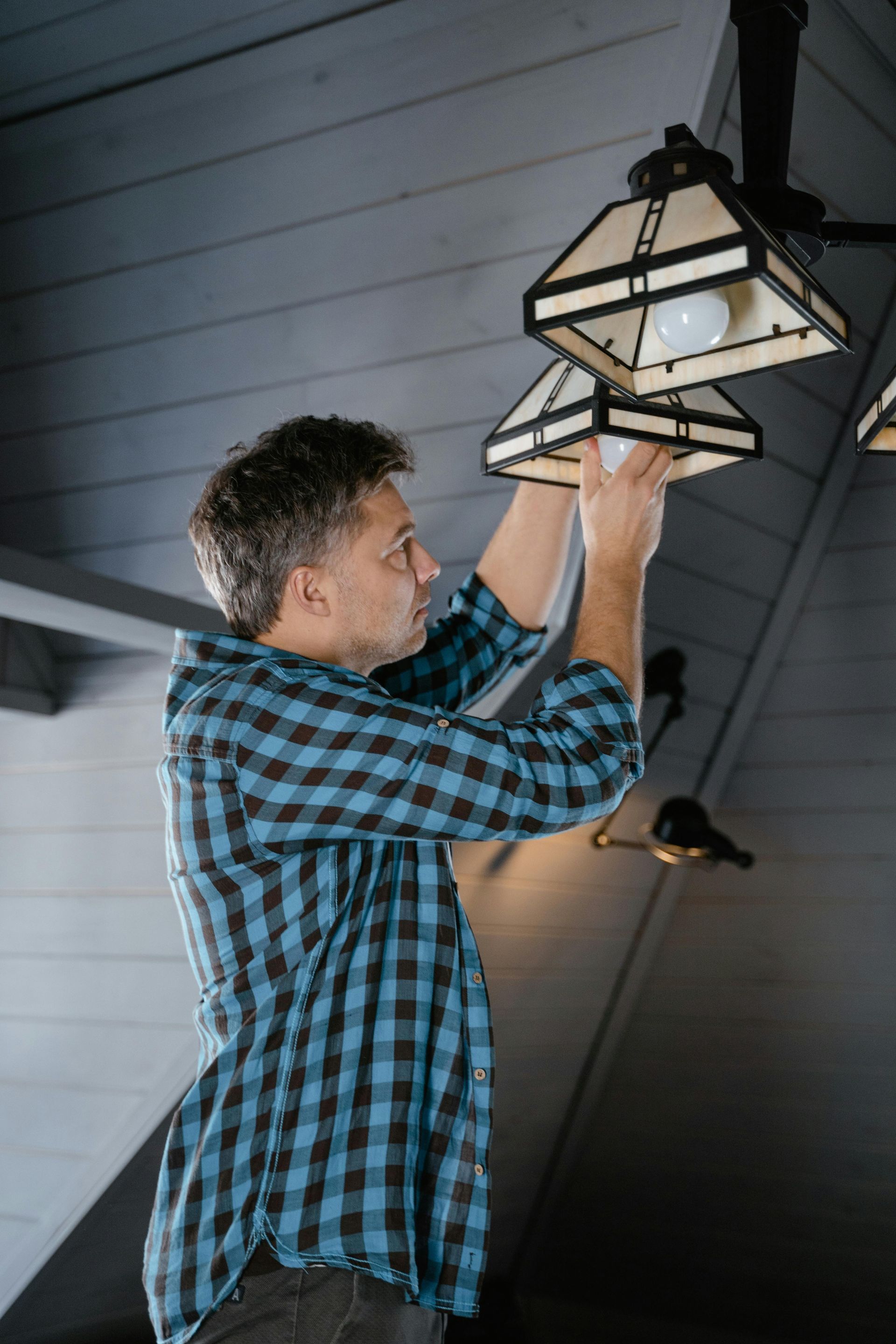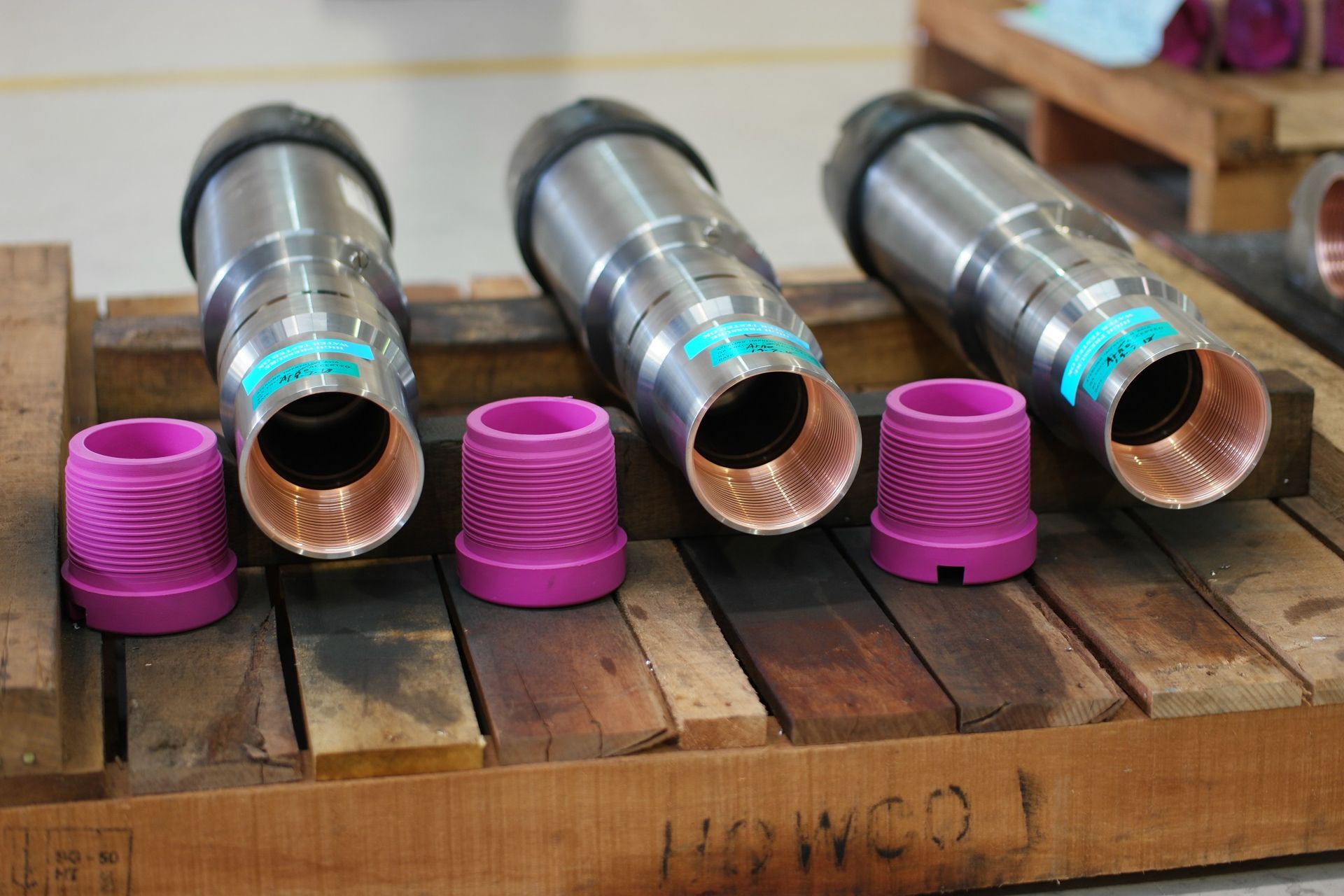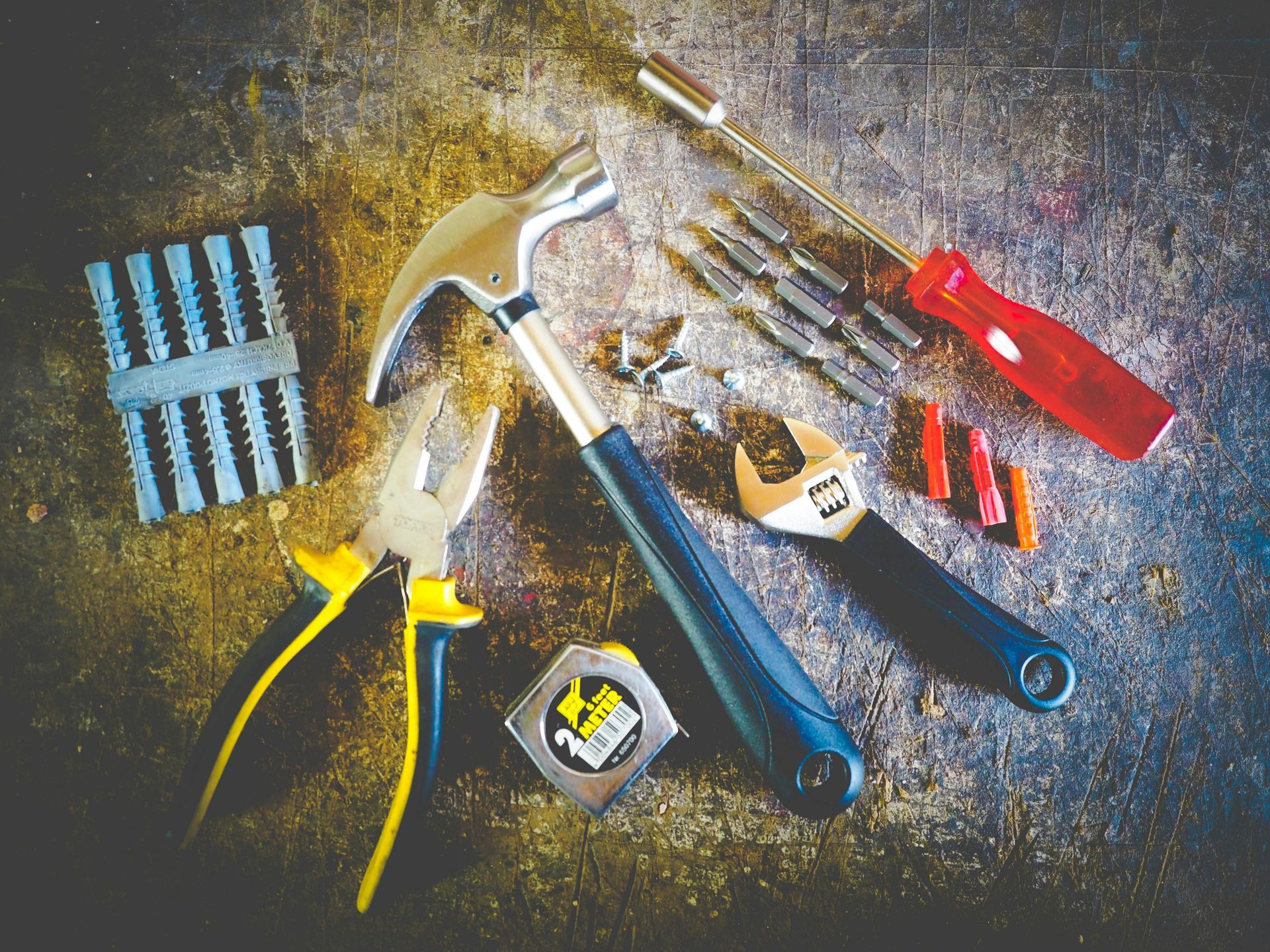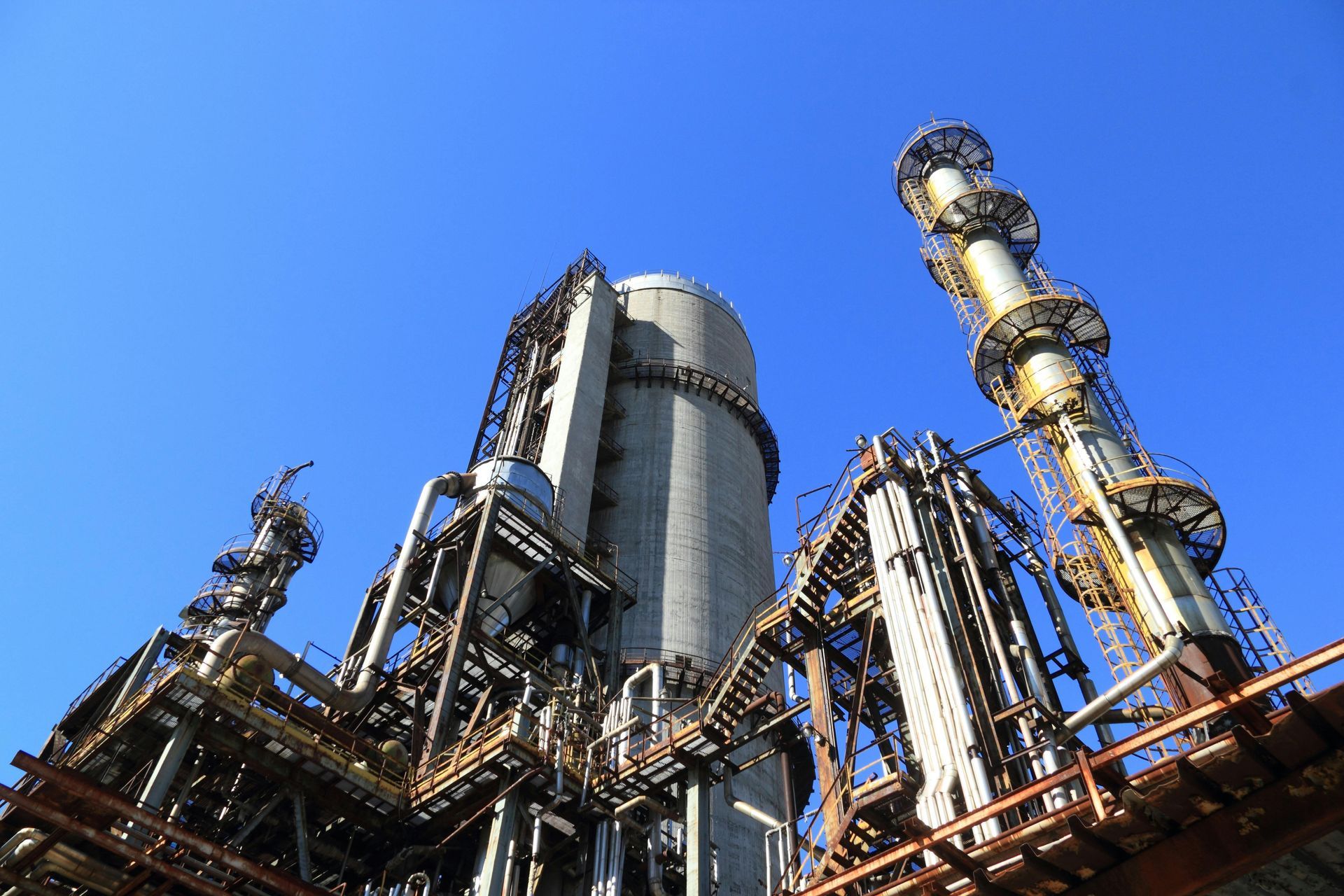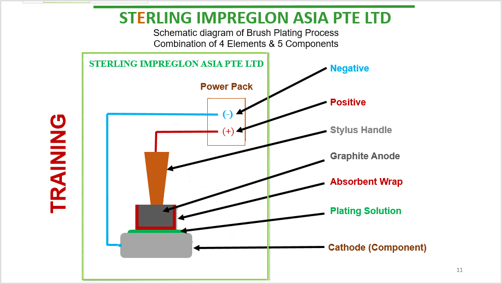Brush Plating vs. HVOF – Which is the Better Solution for Your Repair Needs?
How does Brush Plating compare to HVOF, and which is better for repairing and protecting critical components?
Understanding HVOF and Brush Plating
HVOF (High-Velocity Oxygen Fuel)
HVOF is a thermal spray process that applies coatings by heating powdered material to high temperatures and propelling it onto the surface at supersonic speeds. The result is a dense, hard coating often used for wear and corrosion resistance in heavy-duty applications.
Brush Plating
Brush Plating, on the other hand, is a precision electroplating process that deposits metal coatings onto surfaces without the need for immersion in a plating bath. It is highly targeted, portable, and ideal for on-site or localized repairs.
Key Differences Between HVOF and Brush Plating
1. Application Precision
Brush Plating: Delivers coatings with pinpoint accuracy, applying metal only to the damaged or worn area without affecting adjacent surfaces. This precision makes it ideal for components with complex geometries or localized damage.
HVOF: Coatings are sprayed over the entire surface, requiring extensive masking to protect areas that do not require coating. Achieving localized repairs can be challenging.
2. Surface Finish
Brush Plating: Provides a smooth, uniform finish that often eliminates the need for post-processing. Components can be restored directly to their original dimensions.
HVOF: Produces a rough surface that typically requires additional grinding or machining, increasing time and cost.
3. Heat and Material Integrity
Brush Plating: Operates at room temperature, preserving the base material’s structural integrity. It avoids thermal stress, making it perfect for repairing critical components like hydraulic shafts, printing rollers, and marine engine parts.
HVOF: Generates high temperatures during the spraying process, which can introduce thermal stresses or even distort delicate components.
4. On-Site Repairs and Downtime
Brush Plating: Completely portable and can be performed on-site, reducing the need to dismantle and transport large equipment. This minimizes downtime and logistics costs, a major advantage for industries like marine, oil & gas, and heavy machinery.
HVOF: Requires specialized equipment and facilities, meaning components must typically be removed and sent off-site for treatment, leading to extended downtime.
5. Cost-Effectiveness
Brush Plating: More cost-efficient due to its targeted application, reduced material waste, and elimination of extensive post-repair processing. It is a practical solution for industries aiming to balance performance with affordability.
HVOF: While effective for certain applications, its setup costs, equipment requirements, and need for post-spray finishing make it a more expensive option.
Why Brush Plating is the Superior Solution
While HVOF has its niche in specific high-wear applications, Brush Plating excels in scenarios that demand:
Localized, precision repairs
Preservation of base material integrity
Minimal downtime and transport
Cost-effective and environmentally friendly processes
At Sterling Impreglon Asia, our Brush Plating technology is a proven solution for restoring critical mechanical components. With exceptional adhesion, durability, and the ability to repair damage such as scorelines, fretting, and corrosion pitting, Brush Plating remains unmatched for versatility and practicality.



